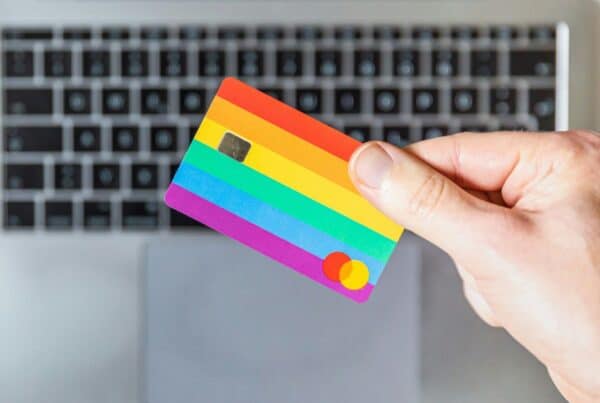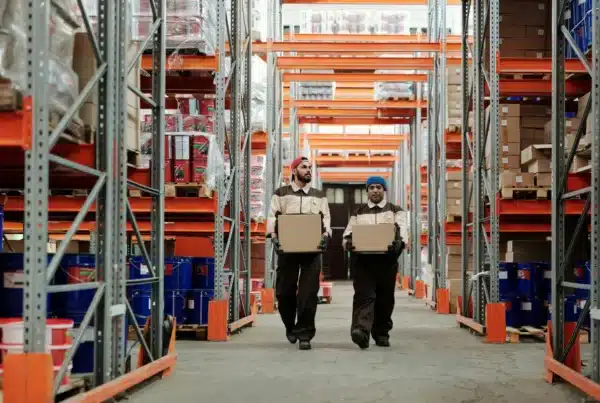
The success of any product, new or established, hinges on awareness.
It’s what creates potential buyers. Few products will ever be successful solely through consumers picking them up on a whim with no prior knowledge.
But, what is product awareness? And at a time when the average person sees over 300 ads per day, how can you reliably create awareness in 2024 and beyond?
In this article, we’ll answer these questions and more. We’ll explore both the tried-and-true methods and the most effective strategies you can utilize to drive demand, boost sales and solidify your product’s position in the mind of consumers.
Why is generating product awareness so difficult?
The most effective way to develop product awareness evolves constantly as the market shifts. As everyday life becomes increasingly saturated with advertising, the more traditional methods of marketing are becoming ever more ineffectual. Paid advertising, in particular, has become so ubiquitous that for many, especially millennials and Gen Z, it simply blends into the background. According to a 2022 Bulbshare survey, 99% of consumers skip ads at the earliest possible convenience.
This phenomenon is sometimes called “advertising fatigue” or “banner blindness” and it applies as much to large-scale advertising campaigns for products with broad, mass-market appeal as it does for targeted online ads.
Compounding this, the rise of ad blockers means that up to 63% of internet users will never see online display advertisements. Google is currently taking steps to prevent ad blocker use on YouTube and has previously discussed removing all ad blocker extensions on Chrome. On the other hand, it has been suggested that this may prove to violate Directive 2002/58/EC of the European Parliament. This may seem irrelevant to those in the United States, but it would not be without precedent. The EU was responsible for GDPR, which also has global implications.

How to generate product awareness in 2024
In the increasingly crowded digital space, traditional, visual advertising is fighting a losing battle. That’s why savvy brands are increasingly employing new and innovative methods that achieve a far greater impact and often at a fraction of the cost of a large-scale visual advertising campaign.
Here are two of the most effective of these methods:
Influencer marketing
Smart sampling

Influencer marketing
Though it may seem like a new marketing buzzword, marketing through social media influencers is merely the latest iteration of celebrity endorsement, which has been around for thousands of years. It has been suggested that Roman gladiators may well have endorsed certain brands of goods as far back as 100BCE.
Influencer marketing involves collaborating with individuals who have a significant and engaged following on social media, blogs, YouTube or other online platforms. Typically this will involve sending the item to one influencer or several to endorse on their various channels. The product may be delivered in a personalized box or wrapping for extra visual appeal, in order to capture the attention of the audience.
The pros and cons of macroinfluencer marketing
The largest influencers have millions of followers, many of whom will place a lot of weight behind the influencer’s opinions. This makes influencer marketing incredibly effective for ensuring your product is consciously viewed by a large number of people, unlike a visual ad.
However, there are some drawbacks to using the largest influencers:
The pros and cons of microinfluencer marketing
Unlike the massive followings of larger influencers, microinfluencers typically have audiences between 1,000 and 100,000. While this may seem like a drawback, there are several huge benefits to marketing through microinfluencers:

Smart sampling
Another form of marketing far older than you might expect is product sampling, with references to the practice going back hundreds of years. More recently, between 1894 and 1913, Coca-Cola relied heavily on sampling to spread awareness about its product. It has been estimated that 1 in 10 Cokes was given away for free in that era.
This practice of offering consumers free samples in the hopes they will purchase the full product is still effective to this day, and for good reason. According to Inspira, 73% of consumers say product samples would induce them to try to use an unfamiliar brand or product, while only 25% said an advertisement would do the same.
The majority of people are not inherently risk-takers. Buying a product that they have no personal experience with is a gamble. Even endorsements by the individuals they trust most and advertorials explaining the benefits and features of the product in meticulous detail are no substitute for personal experience.
But product sampling isn’t just about overcoming objections preventing consumers from trying a product. It can actively convince them to take the next step and purchase the full item. 81% of consumers say that they are more likely to purchase a product after trying a sample.
However, the traditional practice of sending out millions of coupons and samples at random, as was popular in the 20th century, is beginning to die out. With ever-increasing mailing and shipping costs, it is becoming prohibitively expensive and can no longer be justified against the comparatively low ROI.
Instead, brands are turning to a much more targeted version of this marketing campaign: smart sampling.
How does smart sampling work?
Data is collected about potential customers, such as demographics, purchase history, interest and intent. This data is then used to identify people who are most likely to be interested in trying a particular product. Once these people have been identified, they can be sent targeted product samples that specifically cater to their buying behaviors and suggested intent.
This is far more efficient than traditional product sampling. Samples are only sent to people who data suggests are likely to be interested in them. This means more potential customers can be reached with samples for a lower cost. It is also far more effective, as people who are already potentially interested in a product are more likely to purchase and endorse it.

Means of implementing smart sampling
There are a number of ways to implement smart sampling.
Co-packing for targeted product sampling
These approaches are becoming increasingly popular, even as random sample distribution decreases, for two main reasons:
Firstly, because these packages are themed, the consumer has already expressly stated an interest in the type of product you are generating awareness for. This alone greatly increases the ROI of your promotion.
Second, many of these boxes don’t require any payment by the product manufacturer at all, beyond the creation of the sample itself. Instead, the box consists of products from multiple different manufacturers, all packaged together, and the cost of shipping is paid for from the consumer’s purchase or subscription fee. In essence, the consumer is paying to be marketed to.
In fact, targeted product sampling like this is a net benefit for all parties involved.

Key considerations
As economic woes like the cost of living crisis continue to rage, consumers will continue to be risk-averse when it comes to making purchases. Many of the older forms of marketing are becoming less effective, with the increasing immunization of consumers against visual marketing.
Traditional advertising, which prioritizes appearance and appeal to a certain lifestyle, doesn’t provide enough proof to take consumers past the “recognition” stage of awareness of your brand or product. It is certainly far from likely to carry them to the point that they would consider making a purchase.
This is why marketing through an individual the consumer trusts, like a microinfluencer, is so effective at generating product awareness. Even better, providing samples to consumers already interested in the product category you offer can take them right to the “intent to purchase” stage of awareness. Plus, when compared to the expense of advertising campaigns, these approaches can be incredibly cost-effective.
Final thoughts
It’s essential to acknowledge that both influencer marketing and smart sampling require a significant amount of fulfillment and logistics work. Providing microinfluencers with a personalized, immaculately presented package makes for a striking visual that grabs the viewer’s attention. Likewise, while targeted product sampling is incredibly effective at creating buyers, all but the largest CPG companies will need a fulfillment and logistics partner for kitting and shipping.
At Harte Hanks, we have helped brands of all sizes get their products picked, packed and delivered to both retailers and consumers for over 40 years. Our fulfillment and logistics division specializes in high-quality, customizable kitting and print services at a variety of scales and a competitive price point.
Our Data Solutions division can provide a competitive edge to your sampling initiatives. With cleansed, enriched and verified data around buyer habits and intents, you can precisely ensure that your samples reach the right mark with each and every send – B2B or B2C.
If you would like to learn more about how we can help you spread awareness of your latest products in a cost-effective and impactful manner, contact us today.
Contact us today

Stephanie is a Fulfillment Account Director at Harte Hanks. As a seasoned professional with over 20 years of industry experience, Steph has successfully managed all aspects of fulfillment and digital print. Her focus is on developing the right solution set to meet her client’s needs, while maximizing budget spend, ensuring quality and remaining on time.



